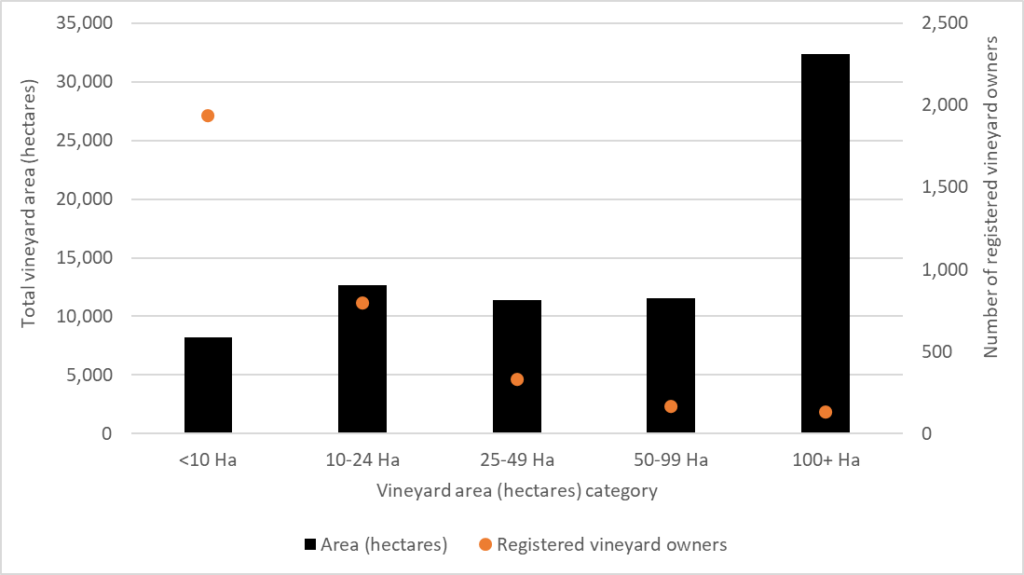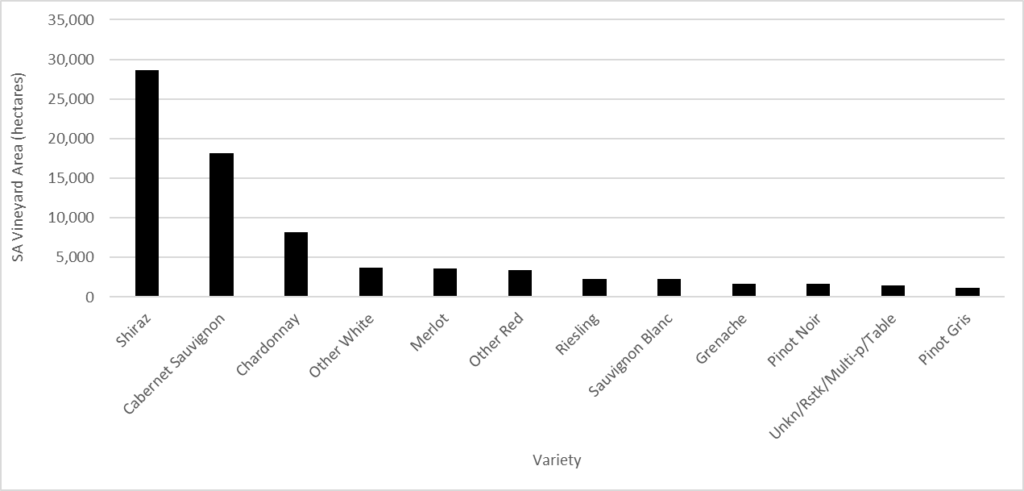As we develop our Annual Report each year, we examine the information held in our Register. The data reveals some interesting facts and trends for 2021/22.
Of new plantings in 2021/22, Shiraz was the most planted red variety by area and Riesling, Fiano, Chardonnay, and Pinot Gris the most planted white varieties by area.
Despite these new plantings, there was a net decrease of 24 hectares to the total registered vineyard area in South Australia in 2021/22, with SA vineyards now totalling 76,153 hectares (at 30 April 2022). There was, however, an increase of six registered owners to 3,252.
Total vineyard area in South Australia has remained relatively static in the range of 75,000 to 79,000 hectares since 2006. The largest area of plantings in 2021/22 was undertaken in the Riverland wine region, followed by the Barossa Valley.
Approximately 60% of South Australia’s registered vineyard owners have vineyards that are less than 10 hectares in size, with only 4% owning vineyards above 100 hectares in size (Figure 1). However, the 130 vineyard owners with greater than 100 hectares account for 42% of the vineyard area in South Australia. By comparison the 1,935 vineyard owners with less than 10 hectares of vineyard account for only 11% of total vineyard plantings in the state.

Figure 2 shows the split of the total 76,153 hectares of vineyards in South Australia by major grape variety, with the top three varieties, Shiraz, Cabernet Sauvignon and Chardonnay accounting for 72% of the total area planted to vineyards. This is unchanged from 2020/21.

It is important to continue to highlight the vulnerability of South Australian vineyards to phylloxera. Data for 2021/22 in the Register shows that 76% of area under vine in South Australia is planted to vines on own roots, which are susceptible to attack by phylloxera (Figure 3). This represents a 2% increase in plantings to rootstock from the previous year. The top four rootstocks planted by area in the state are Ramsey, Paulsen 1103, 101-14 and Ruggeri 140 (Figure 3).

An additional 2.97 hectares of vineyards reached 100 years of age in 2021/22, with South Australia proudly holding some of the oldest vineyards in the world (Figure 4).

Information from the Vineyard Register in 2021-22 was analysed internally and provided to Wine Australia as source information for the South Australian Winegrape Crush Survey.
Pursuant to Section 19 of the Phylloxera and Grape Industry Act 1995, Vinehealth Australia maintains a Register of persons who own vineyards comprising 0.5 hectares or more of planted vines. The Register contains owner details, parcel and land titles information, vineyard area, grape variety, rootstock, and age of vines.